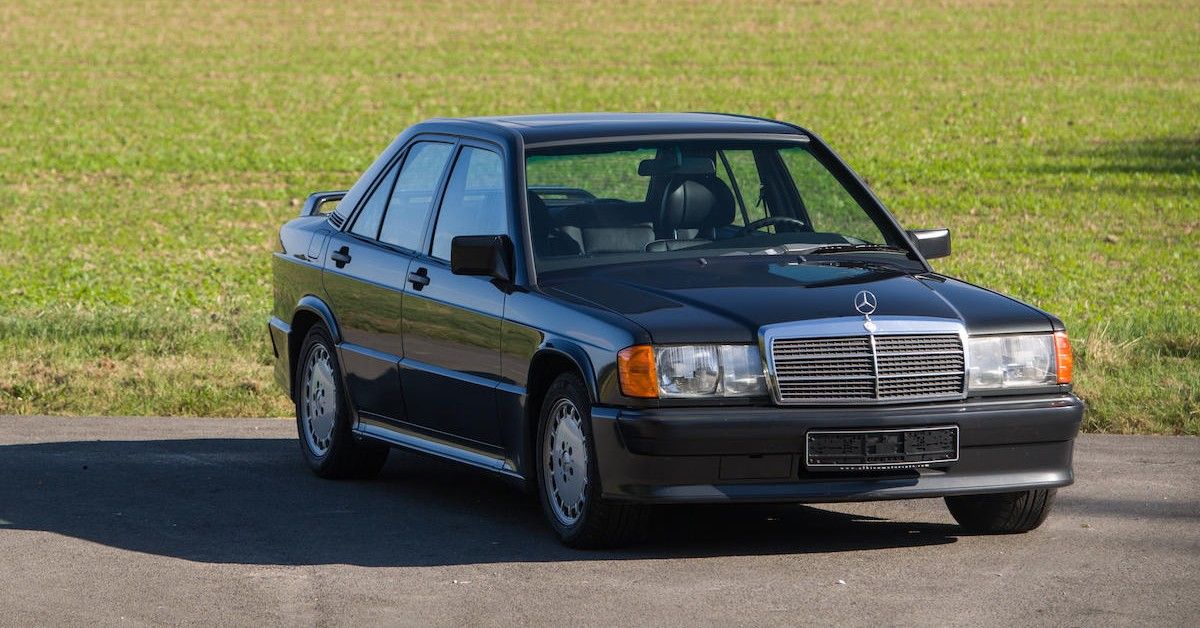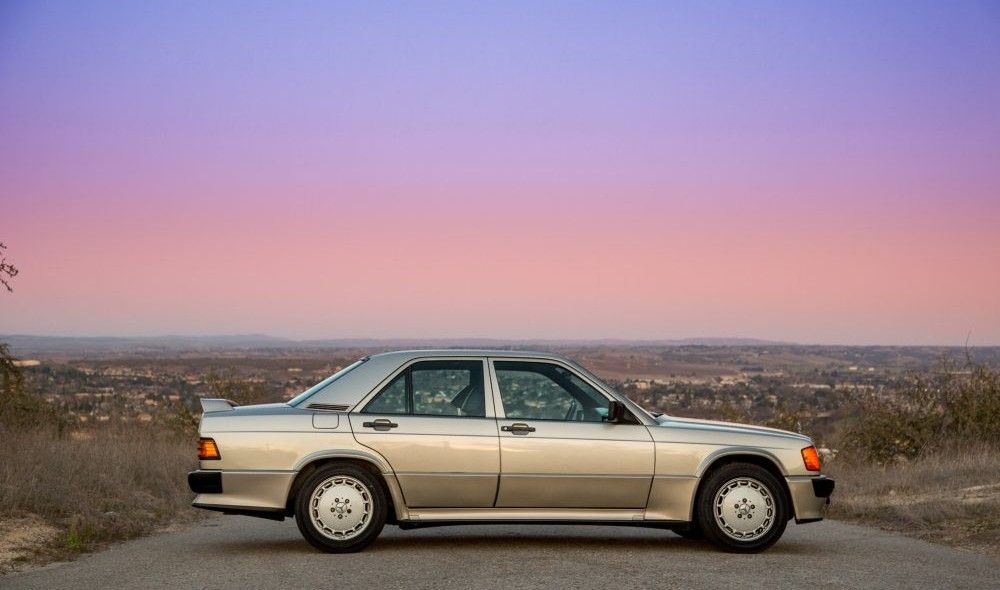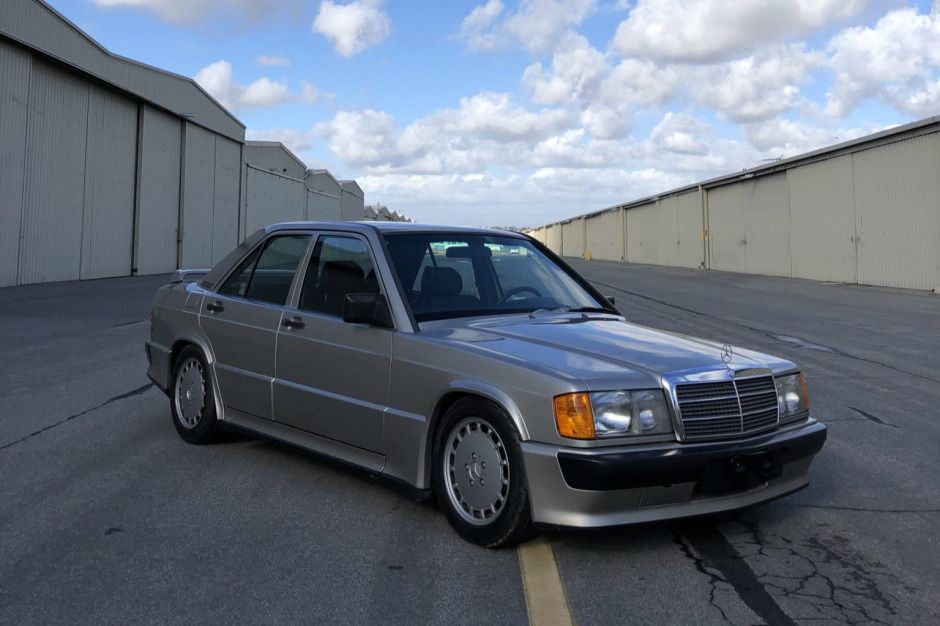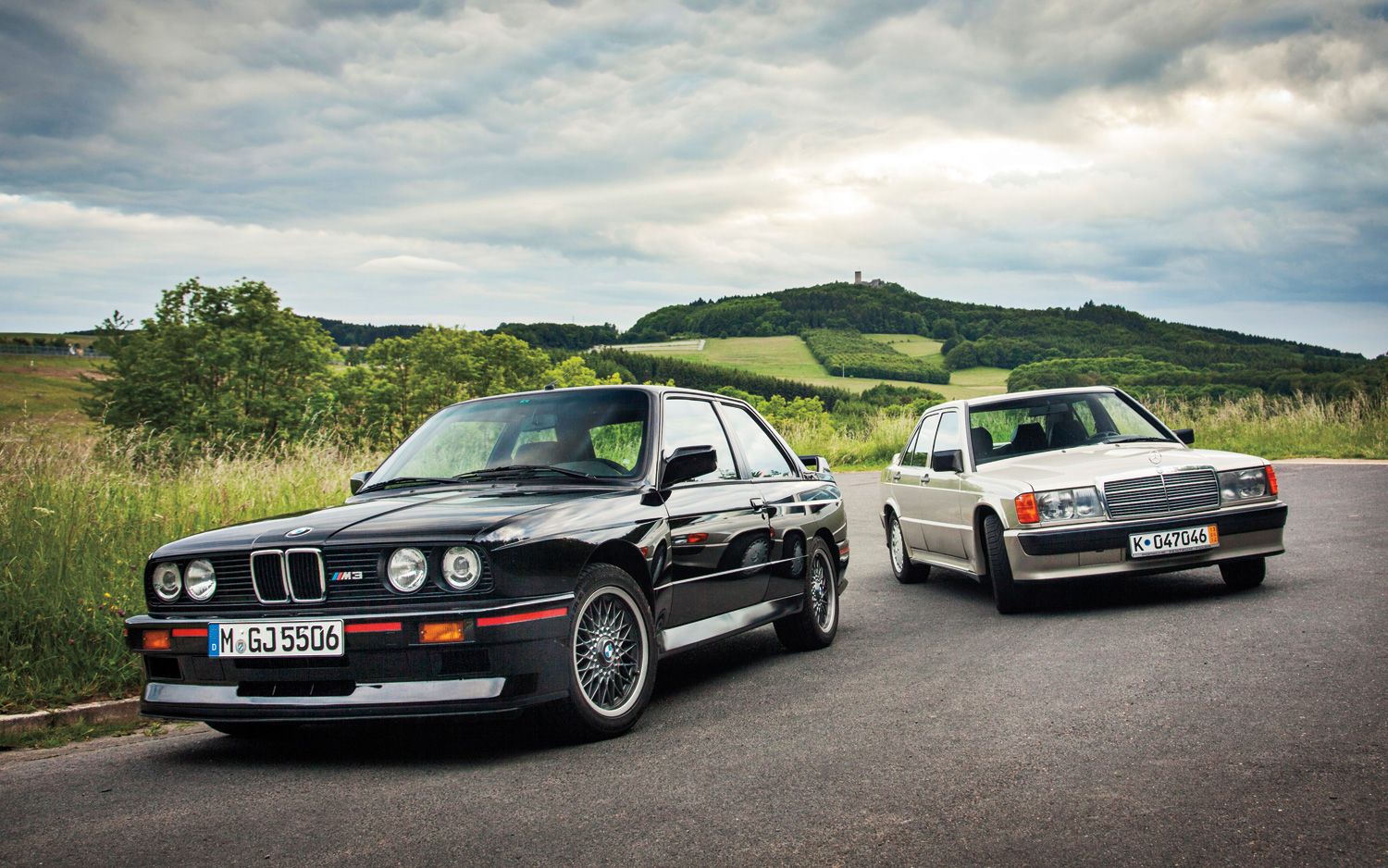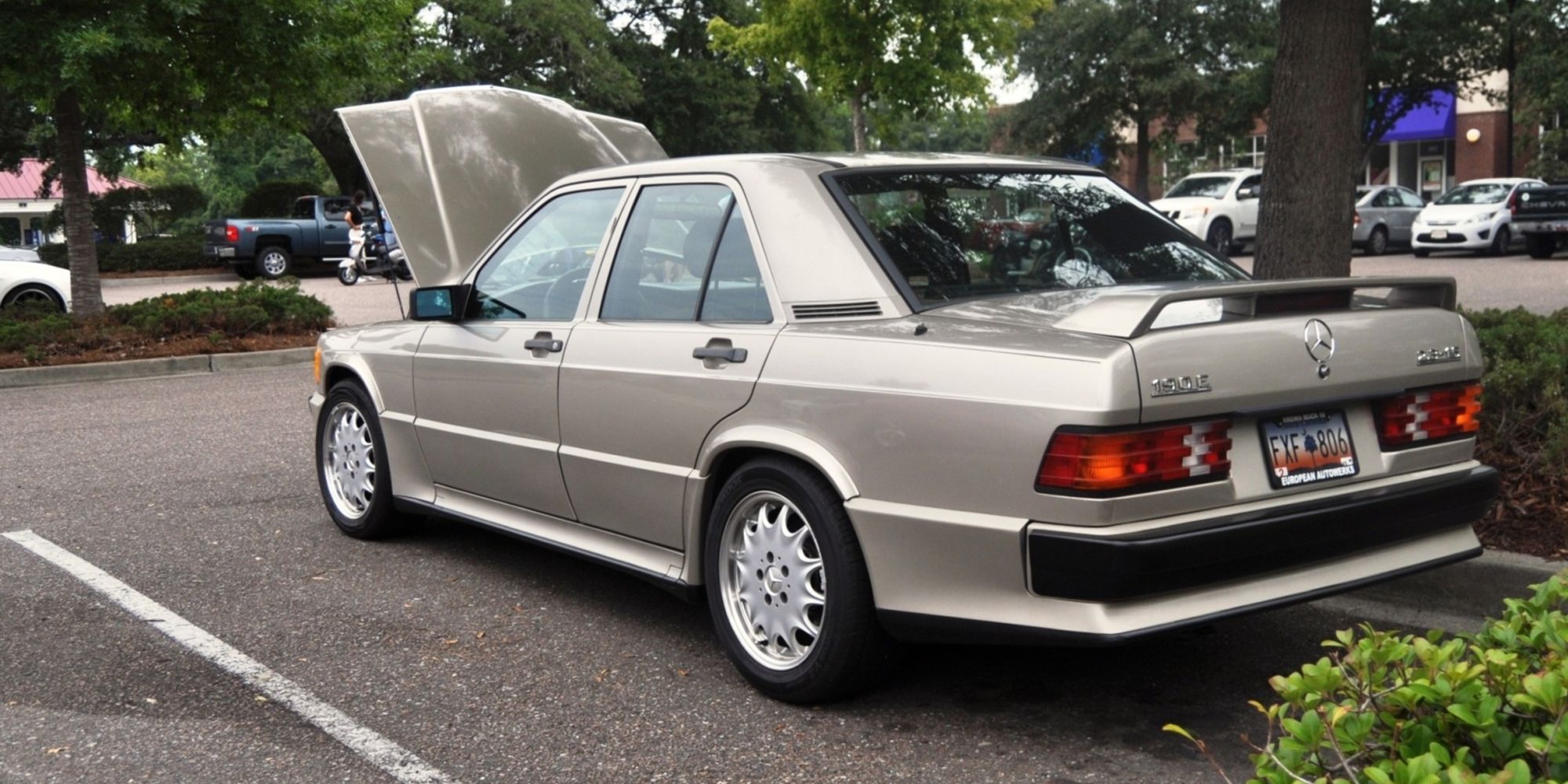It wasn’t until 1999 that Mercedes-Benz began collaborating with AMG to make drift-obsessed variants of their executive luxury cars. Mercedes-Benz collaborated with other tuners to make other icons of the past, one of which being British engineering experts Cosworth, and the Mercedes-Benz 190e 2.3-16.
You may be familiar with its beefed-up sibling, the 190e 2.5-16 Evolution II, a homologation special that has been selling for well over $200,000. Before it came the 2.3-16 Cosworth, Mercedes' first compact sports sedan to come with a body-kit and several other little goodies.
The predecessor to the Mercedes iconic muscle sedan, the AMG C63, the Mercedes-Benz 190e 2.3-16 was a gem for its time.
The Mercedes 190e, The C-Class Of The Time
During the mid-80s, Mercedes decided they wanted to take their little 190e rallying. They previously favored using a V8 powered Mercedes 450 SLC 5.0, but they now wished to toss around something smaller. Insert the 190e.
At the time, Mercedes was known for building big, bulky executive cars. The 190e was a chance to compete with the "compact executive cars" offered by its German competitors. Even though it was the "Baby Benz," it was to keep the Mercedes-Benz standard. Making it both sporty and well equipped. It was one of the first cars in the U.S. to have airbags and abs brakes. It also had an innovative "mono-wiper," which would extend and retract, brushes away more rain the dual-wipers used by the common folk.
The bulletproof M102 2.3L 4-cylinder engine is known for its incredible reliability and longevity. Before Cosworth got their hands on it, the 190e made an ample 139 hp.
Introduce The 2.3-16 By Cosworth
Mercedes contacted Cosworth, also known for the Ford Escort Cosworth, to help them build up their 190e and compete in rallying. By the time they were finished, however, Audi had begun dominated the tracks with their all-wheel-drive turbocharged Quattro. The four-valve per cylinder head Cosworth made 320 horsepower, but Mercedes knew they couldn't compete with only rear-wheel drive. They switched gears and entered the DTM German Grand Touring Car Championship, which requires their race cars to have at least 5,000 production cars. Mercedes fitted a detuned version of the Cosworth Engine onto the 190e and began selling the Mercedes-Benz 190e 2.3-16.
The 190e Cosworth was a success in both rallying and sales. After debuting at the Frankfurt Auto Show in September 1983, the Mercedes had sold out their first year's inventory by the time it hit the showroom floor in '84.
The 2.3-16 was originally only sold in Europe and only made its way to the United States in 1987 and 1988. The European spec made 185 horsepower and 174 lb-ft of torque, while emissions limited the U.S. to a reduced compression ratio and only 167 hp and 162 lb-ft.
The Cosworth was only available in a dog-leg 5-speed manual transmission, making it easier to shift between second and third. It had a five-link rear end suspension set up with self-leveling shock absorbers, incredibly advanced for the time. The body-kit was for more than just looks, it reduced the drag coefficient to 0.32, one of the lowest on a four-door saloon of the time.
The sporty four-door sedan was only offered in two colors, black or light-gold (Smoke Silver). The only available options were heated seats, a sunroof, and rear headrest. It was only available as a four-seater, with extremely bolstered seats for the rear passengers. The Cosworth also came equipped with three extra dials - a lap timer, oil temperature gauge, and voltmeter.
German Luxury Performance
Releasing a sporty sedan was uncharted territory for Mercedes and their typical clientele. Perhaps misunderstood in particular for it's $40,000 asking price, compared to a standard 190e cost of $25,000. It was even more expensive than the S-Class of the time.
Shortly after the 190e Cosworth showed up on the rally scene, BMW conveniently showed up with their new E30 M3. BMW's were slightly more extroverted, their cars were established as "The Ultimate Driving Machine." The E30 M3 was no exception. It had bigger aero, more flair to their fenders, and more power. It dominated the on the track and in sales, but it began a new war of German performance. Soon to follow were the iconic BMW M3 Sport Evo, the Mercedes-Benz 190e 2.5-16 Evolution II, and a race for who can be the best sports sedan.
Buy One While You Can
Andrew Newton of Hagerty projects, “The E30 M3s are hitting six-figure prices, so these comparatively discounted 190E Cosworth's are starting to make a lot more sense to buyers, but prices are on the rise. The ‘80s styling cues are in vogue, and it helps in general that the Benz has a vintage feel with modern reliability and drivability, something that buyers increasingly prioritize.”
Those who grew up in the 80s and 90s are starting to acquire more disposable income and fortunately for us car enthusiasts, the millennials still have an appreciation for classic cars. Not only is the Mercedes-Benz 190e 2.3-16 rare, but it also comes with a reputation of being a joy to drive and durable enough to withstand thousands of miles.
The box shape has regained its charm, in my opinion, and I would be happy to see a Mercedes-Benz 190e 2.3-16 in my garage.

